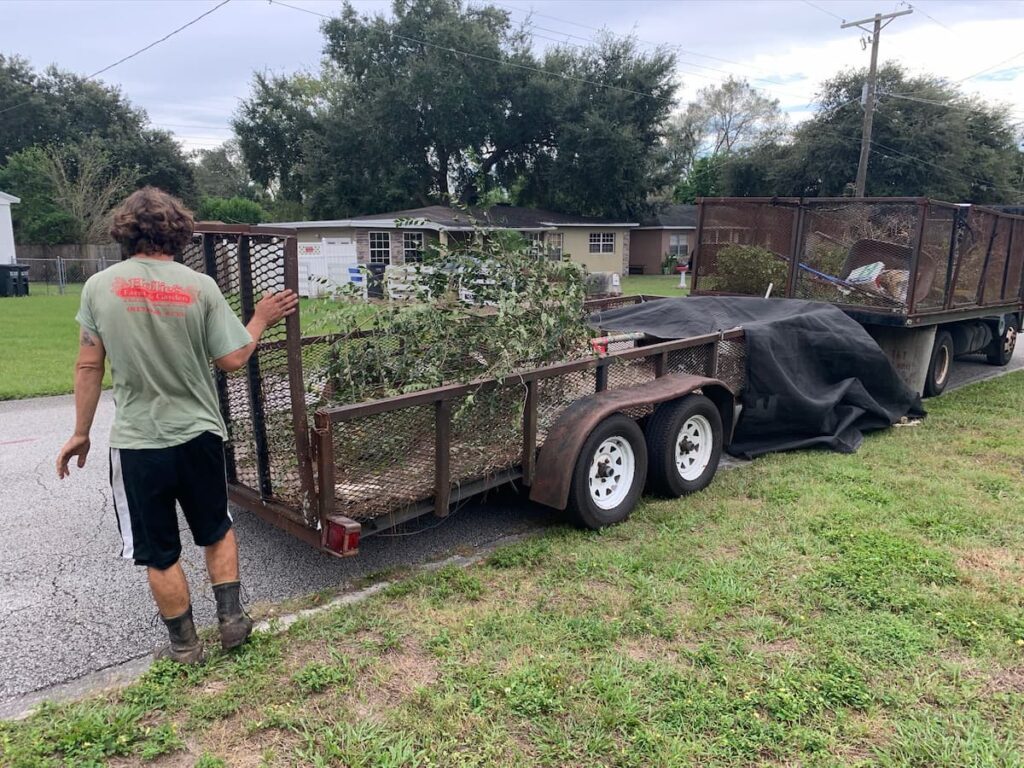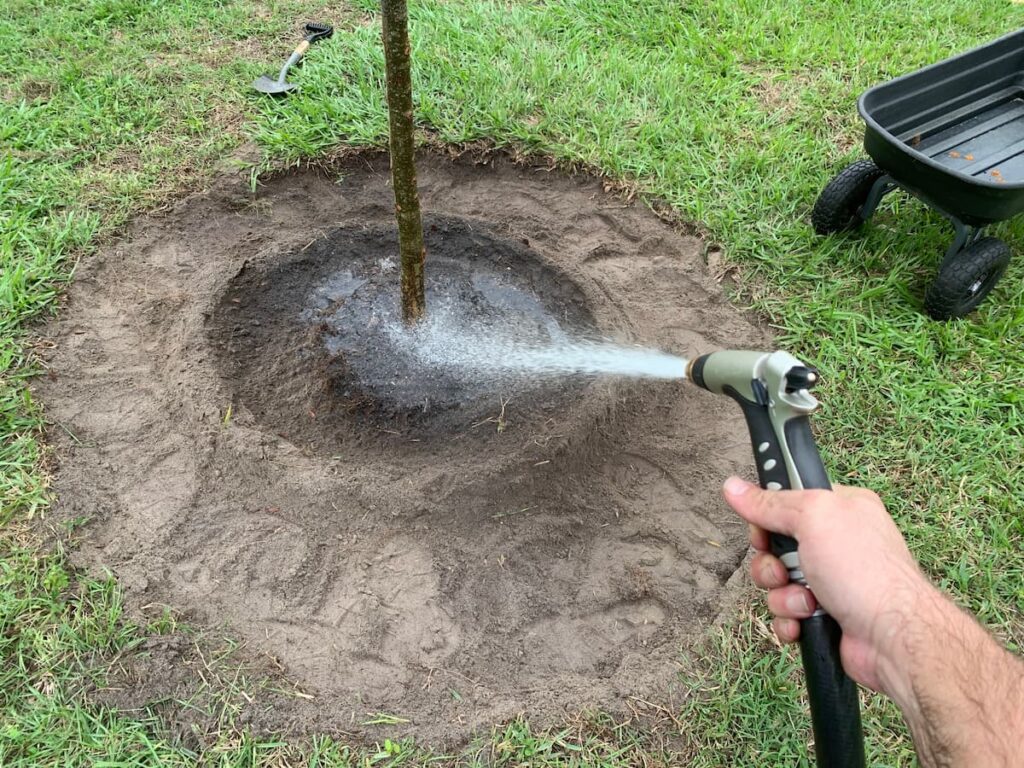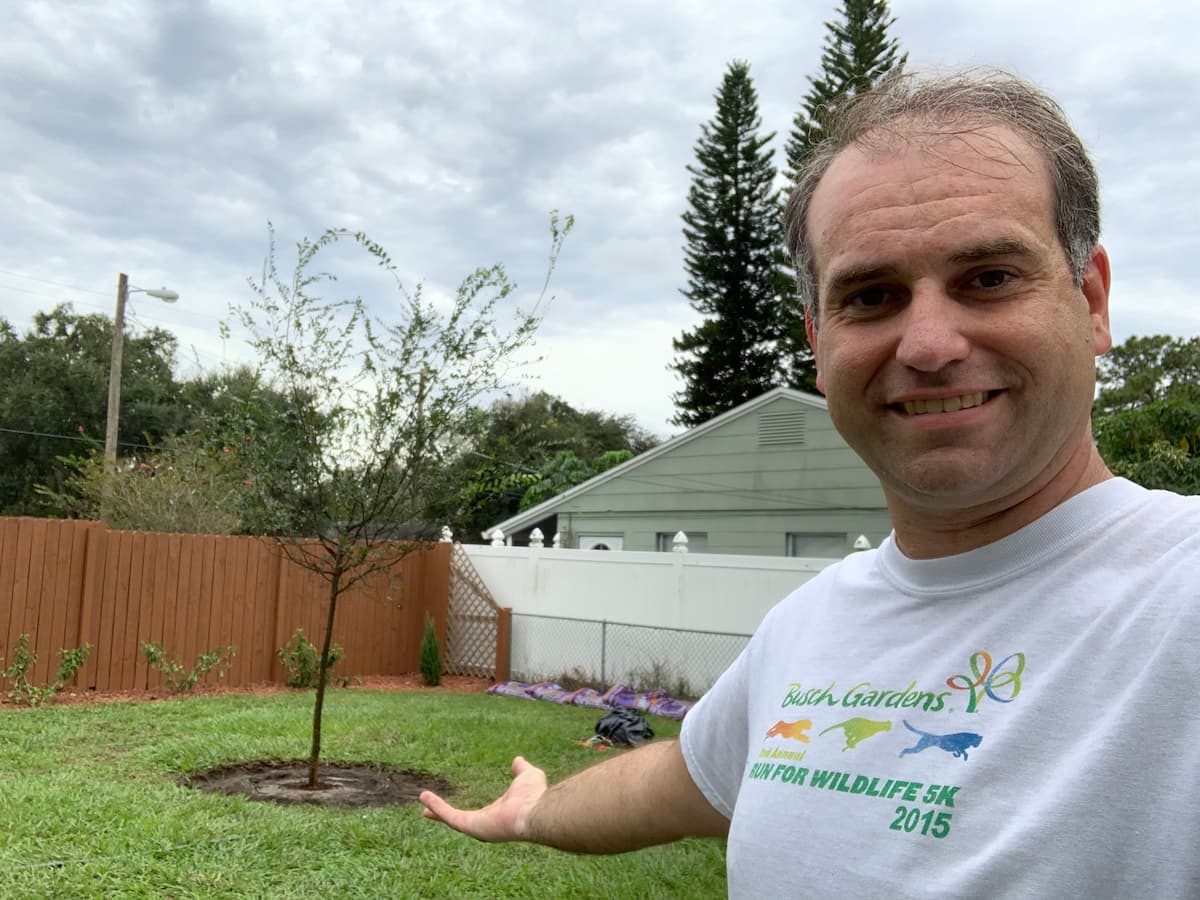Planting a tree the right way isn’t necessarily hard, but it does take some know how to do it correctly.
If you plant a tree, its entire future largely depends on what you did — or didn’t do — when planting it in your landscape.
Just doing a few simple things can help ensure your new tree will thrive in its spot. And as I’ll show you, it all comes down to some easy steps.
The ABCs Of Planting A Tree
As a longtime backyard gardener and all-around do-it-yourselfer, I can tell you all about how to plant a tree. But I also wanted to talk to an expert on the ins and outs of growing trees.
So, I reached out to Morgan Pinkerton, a sustainable agriculture and food systems extension agent at the Parks and Recreation Department of the University of Florida Institute of Food and Agricultural Sciences (UF/IFAS). She shared much wisdom and several tips on planting and growing trees.
3 Tips For Planting Trees
#1 – The Hole For Your New Tree Shouldn’t Be Too Shallow Or Too Deep
“Planting depth can play a big role in the future health of a tree,” Pinkerton says. “While we often think of trees as oxygen producers, we forget that they also use some oxygen. If we plant too deep and cover the root ball of a tree, the roots aren’t able to get the oxygen they need to grow properly, and it can limit their ability to absorb water and nutrients.“
However, you don’t want the hole for your new tree to be too shallow, either. This can cause problems of its own. “On the flip side, not planting deep enough can cause the roots to dry out and not be able to access the water and nutrients they need for the tree to thrive.” Pinkerton recommends digging the tree hole at least twice as wide as the tree’s root ball. It should also be only about 90% as deep. This means about 10% of the root ball sits above the surrounding grade.
#2 – Use Native Soil When Backfilling The Hole
Planting the hole the correct depth is important. But so is making sure you backfill the hole around the root ball the right way. As Pinkerton shares, you’ll need to use the native soil when backfilling. This allows the roots to adapt better to its natural environment. “When you are planting a tree, you want to make sure to mix native soils into the backfill to help create a soil environment that encourages the tree to spread its roots.”
She adds, “Using soil amendments as backfill creates a pocket of soil around the root ball that have different qualities than our native soils such as texture and nutrients. Usually this creates a soft and nutrient-rich environment that the roots don’t want to leave, and the roots will tend to avoid growing into the native soils because of the contrast between the two areas. This is why mixing in native soil into the backfill can reduce this contact and encourage the roots to gradually expand into the native soils over time.”
#3 – Give Your New Tree Time To Grow
If you’re like me, you probably enjoy a little instant gratification. But in gardening, patience is a virtue. Ever hear of the old gardening adage “in the first year plants sleep, in the second year they creep, and in the third year they leap”? It basically means that plants take a while to really get going after your plant them. And as Pinkerton says, this applies to planting a tree, too.
“When a tree is first installed in a new location, it takes a while for it to adjust to its new home. It will focus a lot of its energy initially on root development because water and nutrients, collected by the roots, are critical to the tree growth in the future. Proper watering during the establishment period encourages root development and prevents the existing roots from drying out. This basically prevents additional stress on a plant that is already trying to adjust to its new home.”
How I Planted A New Tree In My Landscape
When I planted an elm in my backyard a few years ago, I made sure I took the necessary steps to do it the right way. I knew two of the most common mistakes when planting a tree are digging the hole too deep and not watering the new tree frequently or well enough.
I also knew that buying a tree and bringing it home without damaging it is also an important first step! It’s one thing to buy a tree, but then how do you get it home? If your vehicle doesn’t have ample cargo room you could accidentally crush the root ball. It could also bend or, worse yet, even break the terminal leader or main branches. This could cause permanent damage. My elm came in a 30-gallon pot and was about 12 feet tall. So, I had it delivered from the local garden nursery where I purchased it.

I made sure the hole was big enough, too. I dug the hole a little more than twice as wide as the root ball. This ensures the roots had room to spread out into the surrounding soil. But I didn’t dig the hole too deep, either.

My new elm tree looks pretty happy in its new home. It’s sitting in a hole that’s more than wide enough for it. It also allows the top of its root ball to sit just above the height of the surrounding landscape grade. I then backfilled the hole for the root ball with the native soil I dug out of the hole.

I created ridge of soil about 3″ high ringing the base of the tree. This creates a basin for holding water as the roots establish. This tree should have a good life ahead of it!

